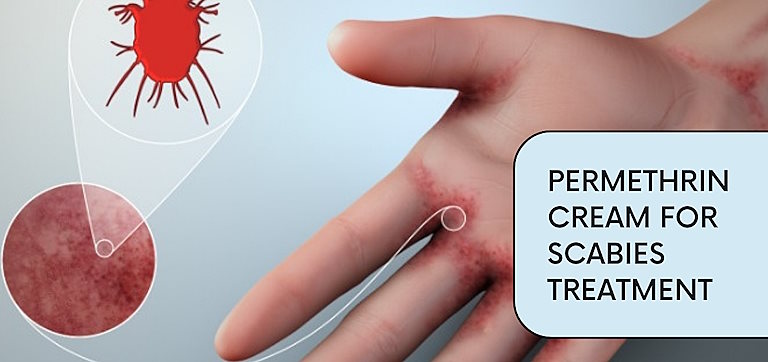A Step-by-Step Guide on How to Use Permethrin Cream for Scabies
Table of Contents
Human Scabies is a parasitic infestation of the skin caused by the tiny mite Sarcoptes scabiei, and, is considered one of the most common dermatological conditions due to its widespread prevalence and easily transmissible nature. The intense itching, skin sores, and serious complications associated with scabies such as septicemia can significantly impact one’s quality of life.
However, it is easily treated with scabicide agents like Permethrin cream, and, in this guide, we aim to provide you with a clear understanding of how to properly apply and utilize permethrin cream to combat scabies infestations effectively.
What is scabies?
Scabies is a highly contagious skin infestation caused by the mite Sarcoptes scabiei var hominis which is known for its ability to spread rapidly, especially in crowded living conditions which makes it a significant public health concern nowadays.
This condition is characterized by intense pruritus (itching), particularly at night, and the presence of burrows, vesicles, papules, and excoriations on the skin.
Transmission
The transmission is mainly through close skin-to-skin contact with an infected individual that allows the mites to transfer from one person to another. However, scabies can also spread indirectly through contaminated clothing, bedding, or furniture, although this mode of transmission is less common.
Pathophysiology
Upon infestation, the female mites burrow into the epidermis, where they lay eggs and deposit feces, triggering an allergic reaction in the host. This reaction leads to the characteristic itching and skin lesions associated with scabies.
Scabies lesions typically appear in the interdigital spaces, wrists, inner elbows, axillae, genitalia, chest, nipples, and buttocks. However, in infants and young children, the scalp, face, neck, palms, and soles may also be affected.
Diagnosis and Treatments
Diagnosis of scabies is done in clinical settings based on the characteristic appearance of the skin lesions and the presence of burrows. In some cases, skin scraping may be performed to identify mites, eggs, or fecal matter under microscopy.
Treatment of scabies involves the use of topical scabicide agents, such as permethrin cream or oral ivermectin, which effectively kill the mites and their eggs. However, it is important to note that all close contacts of an infected individual should also be treated simultaneously to prevent re-infestation.
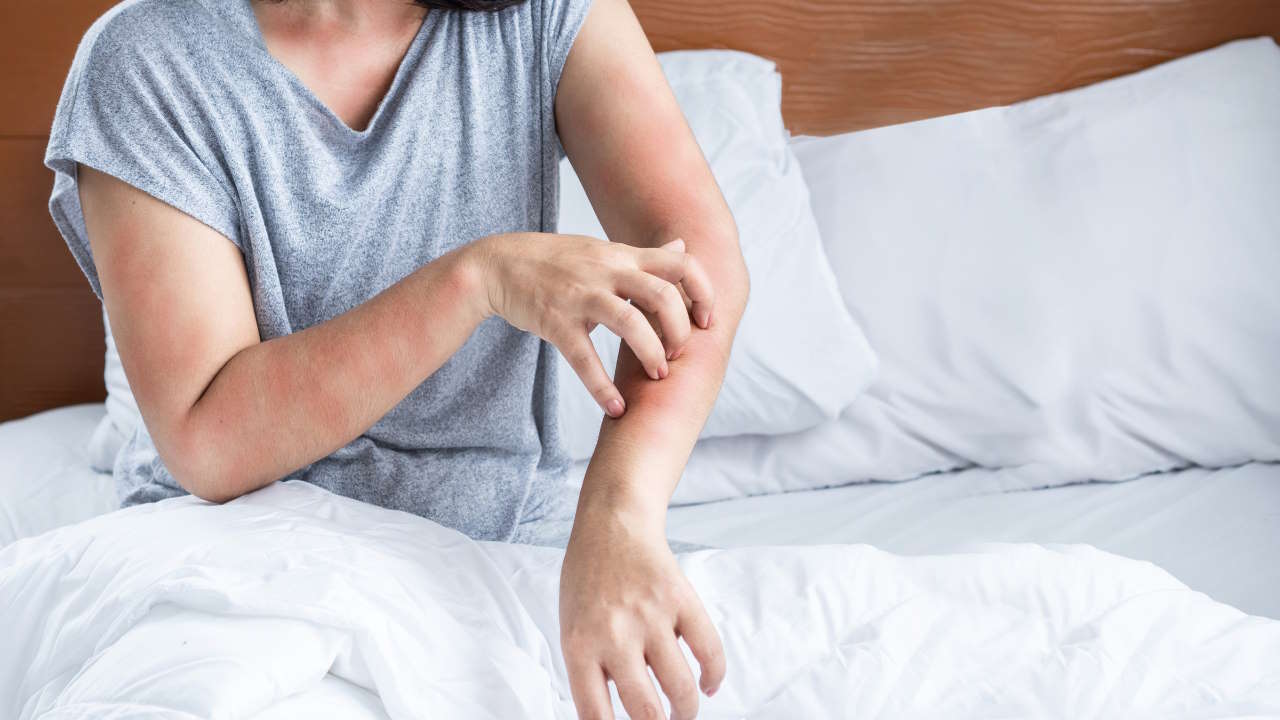
Permethrin: the scabies treatment cream
Permethrin cream is commonly used for the treatment of scabies due to its effectiveness against the Sarcoptes scabiei mite which is the causative agent of human scabies. The rationale behind its use lies in its mechanism of action and pharmacokinetics.
Mechanism of action
Permethrin is a synthetic pyrethroid that acts as a neurotoxin to the scabies mites. It works by disrupting the function of sodium channels in the nervous system of the mites, leading to paralysis and death. Additionally, permethrin has a longer duration of action compared to other scabicides, providing prolonged efficacy.
When applied topically, permethrin is absorbed minimally through the skin. After that, it is metabolized to inactive metabolites, which are then excreted primarily in the urine. Thanks to this low systemic absorption and favorable safety profile, permethrin is generally considered safe for use in both adults and children.
What Is Permethrin Used for Besides Scabies?
Beyond scabies treatment, permethrin finds applications in combating other ectoparasitic infestations such as head lice and pubic lice. Its efficacy in pest control, including mosquito and tick repellency, further expands its utility in public health initiatives.
Here are the situations in which to and not to use permethrin:
Indications:
- Scabies: Permethrin treats scabies infestations by disrupting the nervous system of the mites, ultimately leading to their death.
- Head Lice: It is also effective in treating head lice infestations. Permethrin shampoo is often recommended for this purpose.
- Pubic Lice (Crabs): Similar to head lice, permethrin can also be used to eliminate pubic lice.
Contraindications:
- Hypersensitivity: Individuals who have a known hypersensitivity to permethrin or any other pyrethroid should avoid its use.
- Infants: Permethrin should not be used in infants younger than 2 months old due to potential toxicity concerns.
- Pregnancy and Lactation: While permethrin is generally considered safe for use during pregnancy and lactation, caution should be exercised, and it should only be used if clearly needed and deemed safe by a healthcare provider.
Clinical Trials and Studies
Several clinical trials have demonstrated the effectiveness of permethrin cream for treating scabies. A randomized controlled trial by Strong et al. (2007) compared permethrin cream with oral ivermectin and found that topical permethrin appeared to be the more effective solution for scabies.
-
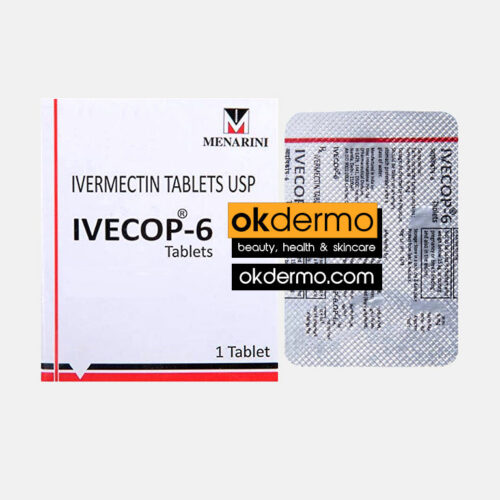
Ivecop® Ivermectin Tablets
Ivermectin 6mg / 12mg
Size: 30 Tablets
Brand name: Stromectol, Heartgard, Mectizan
From USD $48.00 Select options -
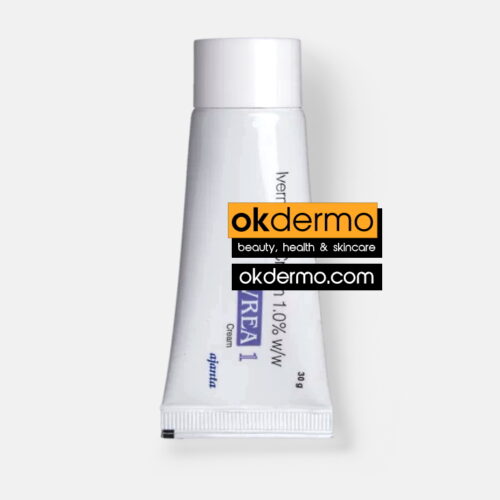
Ivrea® Ivermectin Cream / Shampoo
Ivermectin 0.5% / 1%
Size: 30g / 1.05oz
Brand name: Soolantra, Sklice
From USD $23.00 Select options -
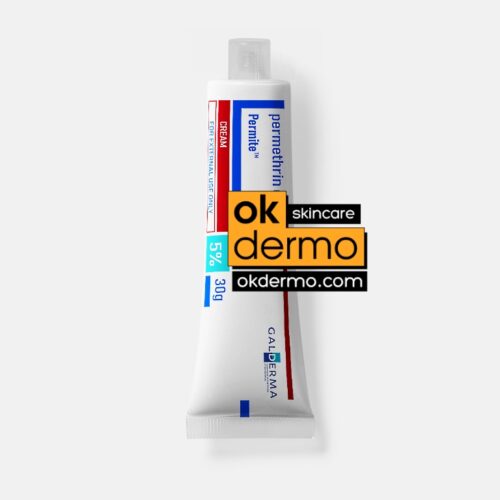
Permethrin Topical Scabicide Cream / Lotion
Permethrin 1% / 5% Insecticide Agent
Brand name: Nix, Elimite, Acticin.
From USD $17.00 Select options
Side effects
While generally considered safe and effective, like any medication, it can have side effects. It’s crucial for medical professionals to be aware of these potential adverse reactions when prescribing or recommending permethrin cream to patients.
Common side effects of permethrin cream include:
- Skin Irritation: This is the most frequent side effect, characterized by redness, itching, burning, or stinging at the application site. It usually resolves on its own but can be bothersome for some patients.
- Transient Tingling or Numbness: Some individuals may experience temporary sensations of tingling or numbness on the skin after applying permethrin cream. This sensation typically resolves without intervention.
- Mild Erythema: Permethrin cream may cause mild redness of the skin at the application site. This is usually temporary and not a cause for concern.
- Rare Allergic Reactions: While uncommon, allergic reactions such as rash, hives, or swelling at the site of application can occur. In severe cases, anaphylaxis may occur, necessitating immediate medical attention.
- Neurological Symptoms: In rare instances, individuals may experience neurological symptoms such as dizziness, headache, or tremors after using permethrin cream. These symptoms should be reported to a healthcare provider promptly.
General Instructions for the Use
Reading the label and adhering to recommended dosage and application instructions are paramount. Pregnant and breastfeeding women should consult healthcare providers before using permethrin. Additionally, avoiding simultaneous use with other topical products is advised to prevent potential interactions.
Preparation Before Application
Before applying permethrin cream, it’s essential to prepare the affected area properly. Start by thoroughly cleaning the skin with mild soap and water to remove any dirt, oils, or other impurities.
Pat the skin dry with a soft, clean towel and allow it to air dry completely before applying the cream. It’s also advisable to trim your nails to prevent scratching and further irritation.
How to apply permethrin
Now that the skin is clean and dry, it’s time to apply the permethrin cream. Follow these steps for proper application:
- Measure the Cream: Depending on the prescribed dosage, measure the appropriate amount of permethrin cream.
- Apply to Affected Areas: Gently massage the cream into the skin from the neck down, covering all areas including folds and creases. Pay extra attention to areas such as between the fingers and toes, under the nails, wrists, armpits, and groin.
- Leave on for Recommended Time: Leave the cream on the skin for the recommended duration as instructed by your healthcare provider. Typically, this is about 8 to 14 hours.
- Rinse Off: After the recommended time has elapsed, thoroughly rinse off the cream with warm water. Avoid hot water as it can exacerbate itching and irritation.
- Repeat if Necessary: In some cases, a second application of permethrin cream may be necessary. Follow the instructions provided by your healthcare provider.
Post-Application Care
After completing the application process, it’s essential to take certain precautions to ensure the effectiveness of the treatment:
- Wash all clothing, bedding, and towels in hot water to kill any remaining mites or eggs.
- Vacuum carpets, rugs, and upholstery thoroughly to remove any mites that may have fallen off the skin.
- Avoid close physical contact with others until the infestation has been successfully treated to prevent spreading the mites.
Can I Wear Clothes After Applying Permethrin Cream?
Post-application guidelines recommend waiting at least eight to twelve hours before wearing clothes to ensure optimal absorption. However, loose-fitting garments can be worn immediately after application to minimize discomfort. Thorough laundering of bedding and clothing is essential to prevent re-infestation.
Conclusion
Using permethrin cream for scabies can provide much-needed relief from the itching and discomfort caused by this condition. By following the proper application process and taking necessary precautions, you can effectively treat scabies and prevent its spread to others. If you have any questions or concerns about using permethrin cream, don’t hesitate to consult your healthcare provider for guidance.
FAQs
-
How long does it take permethrin cream to kill scabies?
Permethrin cream typically starts killing scabies mites and their eggs as soon as it is applied. However, it may take a few days to completely eliminate the infestation. It’s important to follow the prescribed treatment regimen for best results
-
How many times should I apply permethrin cream in a day?
Permethrin cream is usually applied only once as a treatment for scabies. However, it’s important to follow the instructions provided by your healthcare provider. Sometimes a second application may be necessary, but this should be determined by your doctor.
-
Can I wear clothes after applying permethrin cream?
Yes, you can wear clothes after applying permethrin cream. It’s recommended to wait until the cream is completely dry before putting on clothing to ensure proper absorption. Additionally, it’s best to wear clean clothes after each application to avoid re-infestation.
-
What happens if you leave permethrin cream on too long?
Leaving permethrin cream on for longer than prescribed may lead to skin irritation or other adverse reactions. It’s important to follow the instructions provided by your healthcare provider and wash off the cream after the recommended duration, usually 8-14 hours. If you experience any unusual symptoms, consult your doctor immediately.
References
- Strong M, Johnstone P. Interventions for treating scabies. Cochrane Database Syst Rev. 2007 Oct 17;(4):CD000320. doi: 10.1002/14651858.CD000320.pub2. PMID: 17943824.
- Hay RJ, Steer AC, Engelman D, Walton S. Scabies in the developing world–its prevalence, complications, and management. Clin Microbiol Infect. 2012 Sep;18(9):313-23. doi: 10.1111/j.1469-0691.2012.03831.x. Epub 2012 Jul 26. PMID: 22834905.
- Mounsey KE, Murray HC, King M, Oprescu FI, Retes H, Davis JS, Walton SF, McCarthy JS. Retrospective analysis of institutional scabies outbreaks from 1984 to 2013: lessons learned and moving forward. Epidemiol Infect. 2016 May;144(7):1532-41. doi: 10.1017/S0950268815002887. Epub 2015 Dec 10. PMID: 26654878.
- Rosumeck, S., Nast, A., & Dressler, C. (2019). Evaluation of Ivermectin vs Permethrin for Treating Scabies-Summary of a Cochrane Review. JAMA dermatology, 155(6), 730–732. https://doi.org/10.1001/jamadermatol.2019.0279
Post by:
Dr.Marcella Jiovanni
Health and Beauty Expert
“Marcella Jiovanni actively promotes the importance of maintaining healthy skin, she envisions the future of dermatology as moving away from pure medical, pharmacological dermatology and flowing more toward a holistic approach to wellness and skincare.”

